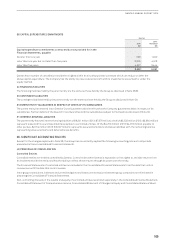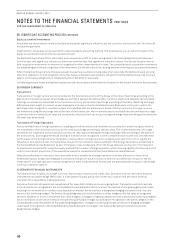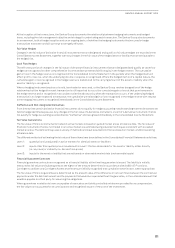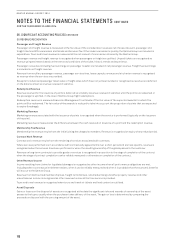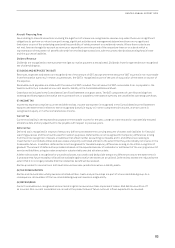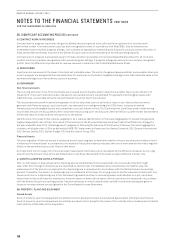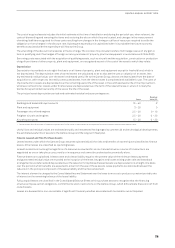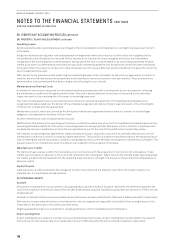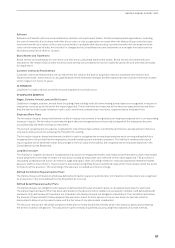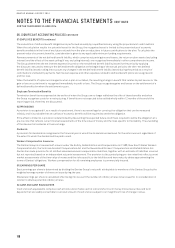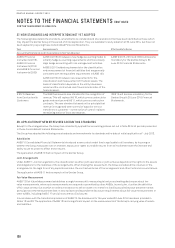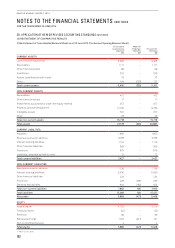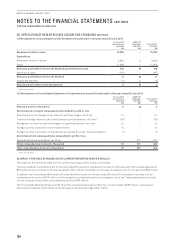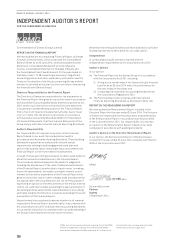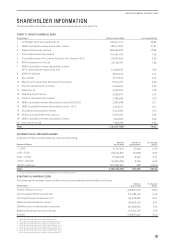Qantas 2014 Annual Report Download - page 121
Download and view the complete annual report
Please find page 121 of the 2014 Qantas annual report below. You can navigate through the pages in the report by either clicking on the pages listed below, or by using the keyword search tool below to find specific information within the annual report.
119
QANTAS ANNUAL REPORT 2014
(T) NET FINANCE COSTS
Net finance costs comprise interest payable on borrowings calculated using the effective interest method, unwinding of the discount on
provisions and receivables, interest receivable on funds invested, gains and losses on mark-to-market movement in fair value hedges.
Finance income is recognised in the Consolidated Income Statement as it accrues, using the effective interest method.
Finance costs are recognised in the Consolidated Income Statement as incurred, except where interest costs relate to qualifying
assets in which case they are capitalised to the cost of the assets. Qualifying assets are assets that necessarily take a substantial
period of time to be made ready for intended use. Where funds are borrowed generally, borrowing costs are capitalised using the
average interest rate applicable to the Qantas Group’s debt facilities.
(U) INTEREST-BEARING LIABILITIES
Interest-bearing liabilities are recognised initially at fair value less attributable transaction costs. Subsequent to initial recognition,
interest-bearing liabilities are stated at amortised cost, with any difference between cost and redemption value being recognised in
the Consolidated Income Statement over the period of the borrowings on an effective interest basis. Interest-bearing liabilities that
are designated as hedged items are subject to measurement under the hedge accounting requirements.
(V) SHARE CAPITAL
Ordinary Shares
Ordinary shares are classified as equity. Incremental costs directly attributable to issue of ordinary shares are recognised as a
deduction from equity, net of any related income tax benefit.
Repurchase of Share Capital
When share capital recognised as equity is repurchased, the amount of the consideration paid, including directly attributable costs
is recognised as a deduction from equity.
Treasury Shares
Shares held by the Qantas sponsored Employee Share Plan Trust are recognised as treasury shares and deducted from equity.
(W) COMPARATIVES
Where applicable, various comparative balances have been reclassified to align with current period presentation. A provision for
long service leave which is expected to be settled beyond the next 12 months is measured as the present value of expected future
payments to be made in respect of services provided by employees up to period end. Notwithstanding this pattern of expected
future
payments, for 30 June 2014, the provision is presented as a current liability in the Consolidated Balance Sheet if the
employees’ entitlements
have vested (i.e. the employee has reached the minimum period of service required to become entitled to
long service leave). For comparability, current provisions for 30 June 2013 have been reclassified on a consistent basis resulting in an
increase incurrent provisions of $277million with a corresponding decrease in non-current provisions (30 June 2012: $309million).


